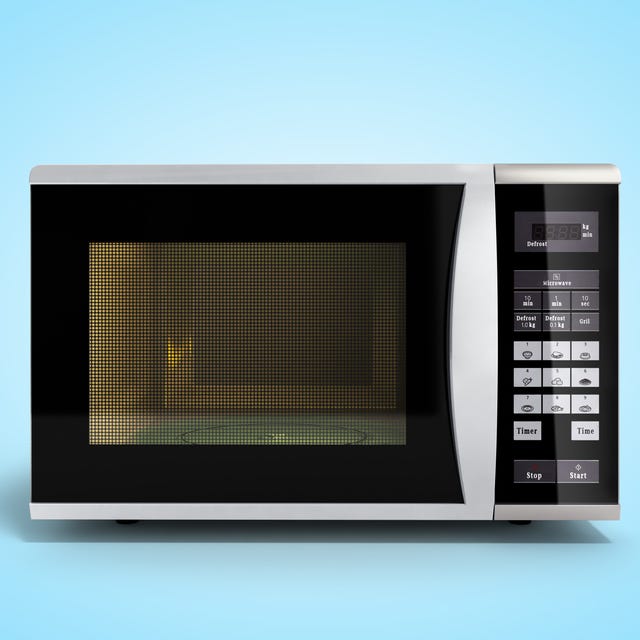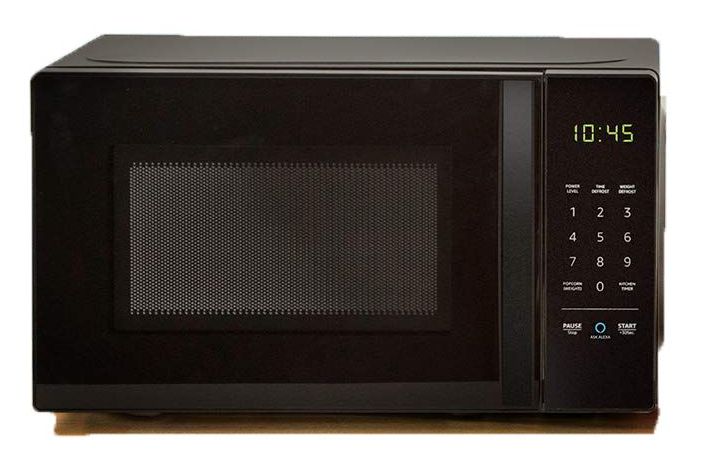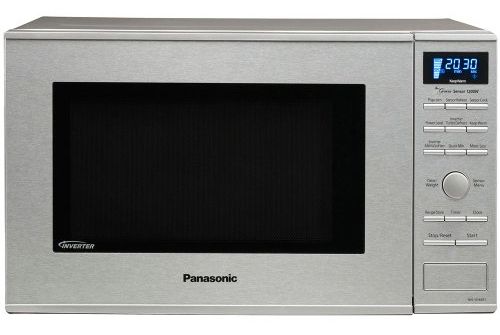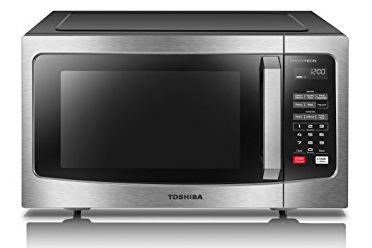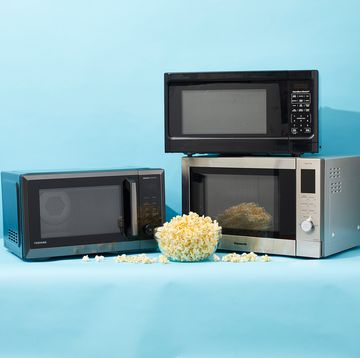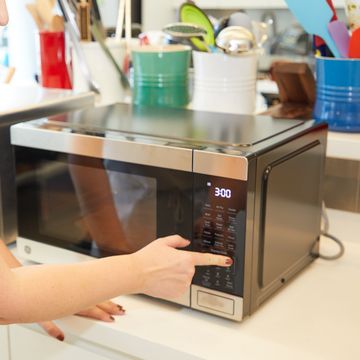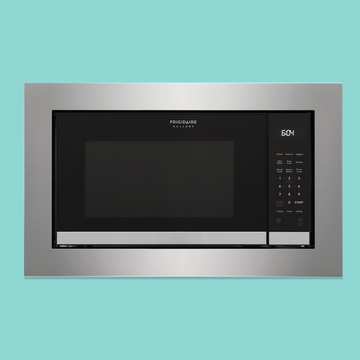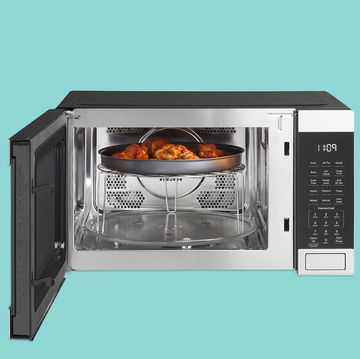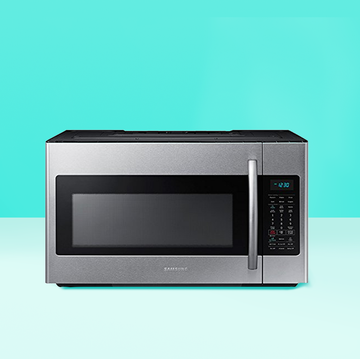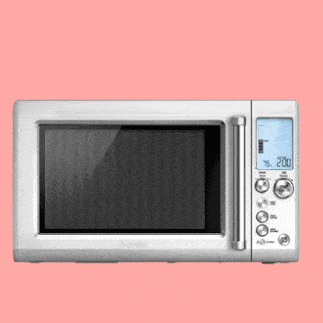Buying a microwave is an essential to-do for most people, whether it's for your first home, because your old one broke or your kitchen needs an upgrade. The Good Housekeeping Institute can answer all the questions that are probably on your mind while shopping. Check out our complete guide below before you buy your next microwave, and then pick your favorite from our list of the best countertop microwaves.
What type of microwave do I need?
There are three main microwave types: countertop, over-the-range and built-in. Countertop microwaves are the most common and generally the most affordable. People like them because they don't require any extra installation — simply unpack the box and plug in your new appliance. Another big benefit: if you need to move, they move with you.
On the other hand, built-in and over-the-range models cost more, usually need a professional installer and they're more likely to stay with your home, even when you leave it. But they also have unique benefits. "Over-the-range models draw smoke and odors from the cooktop and filter it before exhausting it back into the room or outdoors," says Carolyn Forte, director of the GH Home Appliances and Cleaning Products Lab. "Built-in models free up counter space and make your kitchen look more high-end." If you're set on a countertop model, but like the built-in look, she suggests looking for trim kits that make most microwaves seem like they're built into your cabinets.
What size of microwave do I need?
Once you've established the type of microwave that makes sense for your situation, ask yourself how much kitchen space you're willing to give up. If your counter area is limited, you might want to save space by choosing a smaller model. Internal capacity of countertop microwaves can range in size from 0.5 cubic feet (large enough to fit most 10-inch dinner plates, but not much else) to a little over 2 cubic feet (should accommodate larger cookware). The most common size is in the 1-2 cubic feet range. External dimensions also vary, so always measure the desired location's space (width, depth, and height!) to make sure it can accommodate the dimensions listed on the box. While you're measuring, double check that there's a power outlet nearby. Our organizing experts love to conceal cords behind the appliance.
Opt for a smaller model (less than one cubic feet) if you're pressed for room on the countertop, like this compact AmazonBasics microwave that works with Alexa if you already have an Amazon Echo. If you're feeding a whole family, go for a bigger oven that can handle large dishes, like casseroles and lasagnas. The GE Profile Microwave (a favorite of our Kitchen Appliances Lab!) is perfect for families that use it often. Even if you live alone, a mid-size microwave is worth the money and space if you cook with it a lot.
What microwave wattage do I need?
When it comes to microwaves, wattage equals power. A 1,000-watt microwave will cook quickly and efficiently, so that's a great baseline. Microwaves with 700 watts or less are slower and may not cook evenly. In general, the higher the wattage, the faster the cooking time. Keep in mind that microwaves with higher wattages often come with bigger price tags, so that's something to remember if you're trying to stick to a budget.
Concerned about how a change in wattage will affect your cooking? With your new microwave, make something you always made in your older model and note the difference of how long it takes. Don't lose hope if it's not exactly the same as what you're used to. "Whether you’re boiling water, melting chocolate, or popping popcorn, take advantage of the 'add 30 seconds' or 'quick minute' button to test for doneness," says Susan Westmoreland, culinary director at the Good Housekeeping Institute.
What microwave features and specs should I look for?
Today's microwaves offer many features to make your life easier. Things like automatic defrost and pre-programmed settings quickly warm up snacks and take the guesswork out of preparing meals, while sensors can calculate cook time based on the amount of steam the food emits. Buttons that allow you to precisely control timing down to the second can be very useful.
If you're trying to save space in your kitchen, it might be worth it to explore a multi-purpose microwave. Some double as convection ovens, toasters, rotisseries, or other appliances!
Families with young children should look for microwaves with a child lockout feature. It's easy to use: Adults have to press a sequence of buttons (1234, for example) before being able to operate the appliance.
Pro tip: See if your favorite dish fits on the turntable. If the dish is too wide to rotate, look for a feature that lets you shut off the turntable so it's stationary during cooking.
You're going to want to pay attention to the control panel and door, too. Large buttons and icons help make sure you don't accidentally press the button next to what you intended to. Make sure the control panel is easy to read in various lighting — including in the dark. Plus, "smooth control panels are easier to clean than panels with buttons or knobs," says Forte. For the door, you'll notice that some microwaves open with the push of a button, while others have an actual handle. Choose what feels most comfortable to you.
And for the midnight snackers in your family, some microwaves (like this expert-approved Toshiba microwave) even have the option to turn off all sounds.
How often should I replace a microwave?
Microwaves typically have a life span of about 10 years. But if your unit is operating properly after that amount of time, you can continue to use it. Even if you think your microwave still works well, you'll want to replace or repair it if it has any defects in the door or in the seal around the door.
What else do I need to know about microwaves?
To keep your food from overheating when microwaving, stir it once or twice while cooking. You should also use a cover (or paper plate!) to prevent splatters — if you want to let some steam escape, you can use a paper towel or waxed paper instead. To hold in moisture, use plastic wrap or a lid designed for microwave cooking. And if your meal is prone to splattering (like cooked cereals or tomato sauce) use a bigger bowl to give it more room to boil.
Follow these tips to clean your microwave and keep it free of excess grime:
- Clean with baking soda, dish soap, or vinegar (white or apple cider). Find specific steps for the interior, exterior, and microwave doors here.
- Use Mr. Clean Magic Erasers (a Good Housekeeping Seal holder!) to get rid of stubborn spots.
- Regularly wipe down your appliance every couple of days to prevent gunk from building up over time.

Amina is a product review writer and editor who worked as an editorial assistant in the Good Housekeeping Institute from 2018 to 2020, writing original content based on GH Lab experts' product testing and analysis. Amina graduated from Montclair State University with a B.A. in communication studies and journalism.
